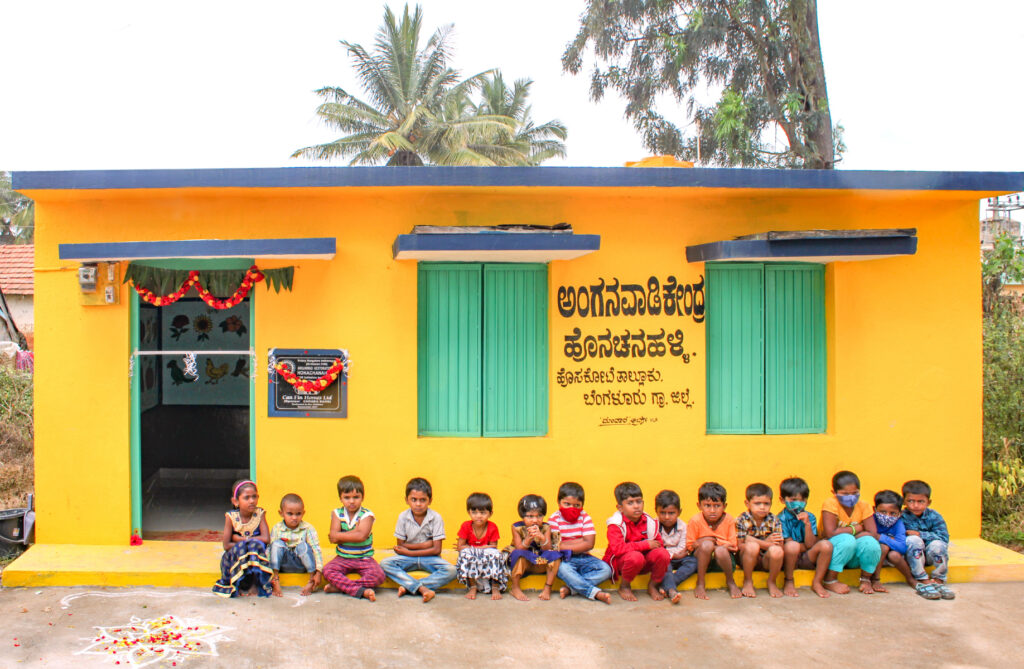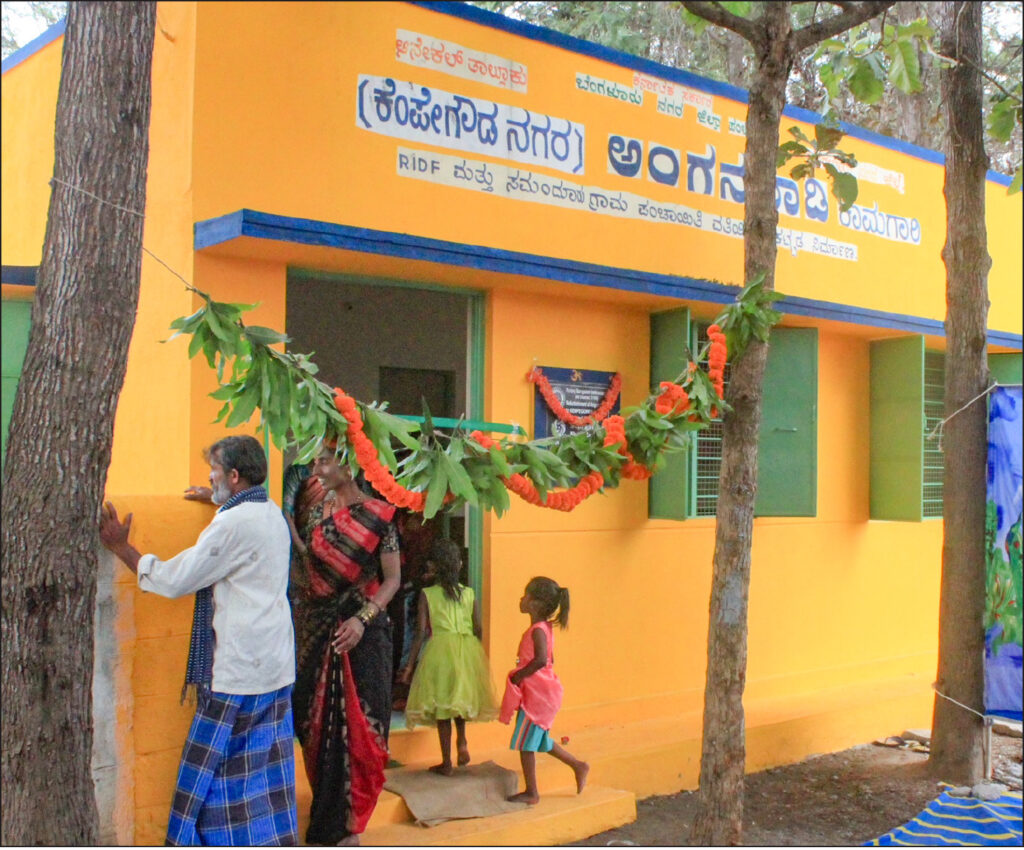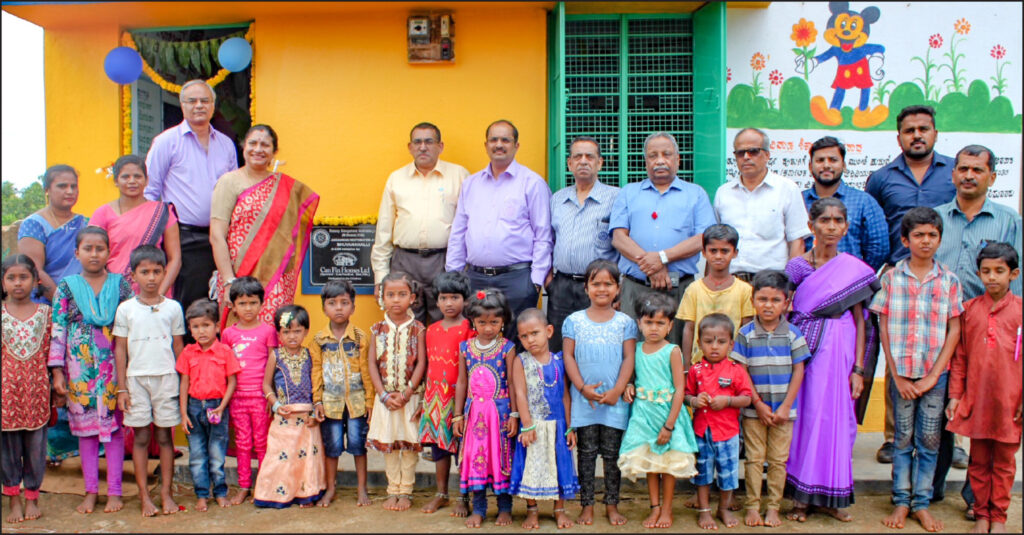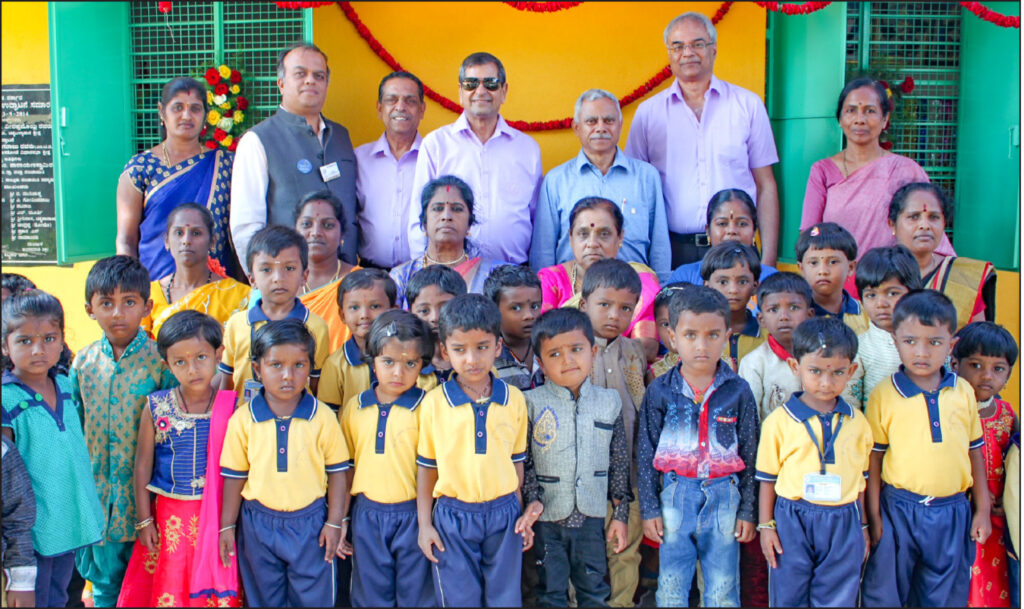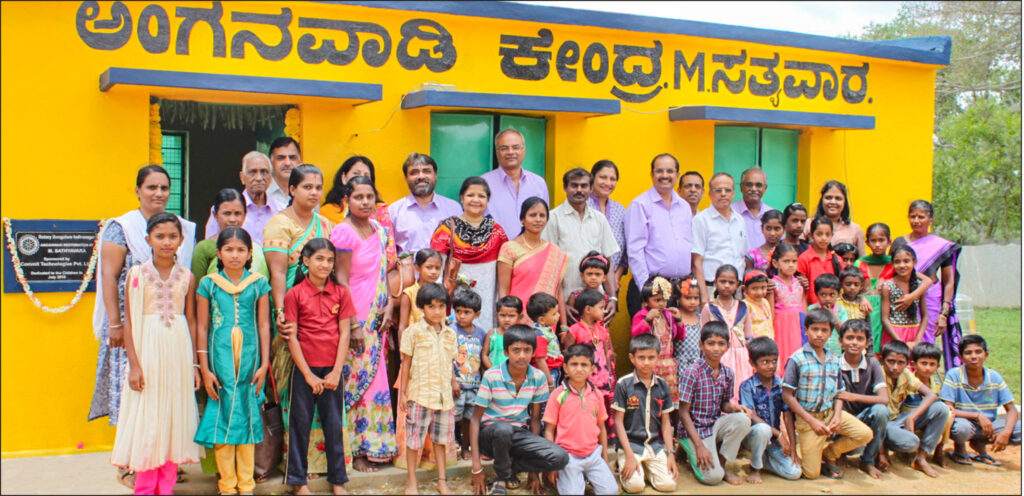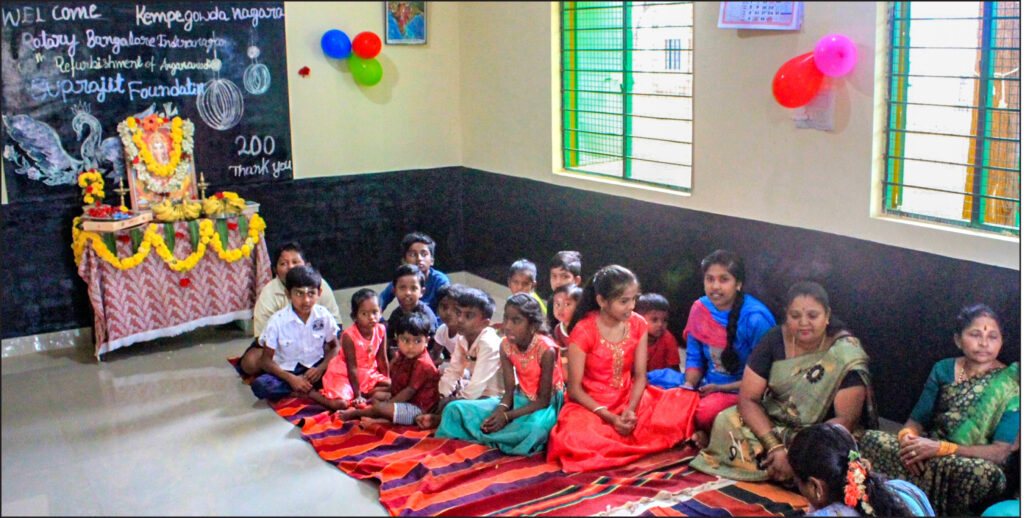A single Bengaluru club renovates 214 anganwadis @ Rs.4 crore
These days the one buzz in Rotary is about the need to do “large, sustainable” projects that create a mega impact and enhance the public image of Rotary. Well, a single club in Bengaluru, RC Bangalore Indiranagar, RI District 3192, has done a project to renovate and bring back to life over 200 anganwadis in the three taluks of Karnataka — Hoskote, Kolar and Anekal — all of which come under Bengaluru rural district, and are within a radius of 30–80km from the metro.
The project began in 2017–18, with the club first taking up the task of renovating 10 anganwadis. Then the target shifted to 200, and before July 2023, as many as 214 anganwadis had been renovated at a whopping cost of ₹4 crore. When I express surprise over the club’s successive presidents and other leaders focusing on a project some other set of leaders had started, for six long years, PDG Suresh Hari, a member of this club with 151 Rotarians, says, “That is because we have a vision plan, and a Strategic Planning Committee which deliberates on projects and we accept long term and sustainable projects only on the recommendation of this committee. Without such a plan, the projects can only be short-lived, without the ability to create a long-term impact on the community, which is after all our objective.”
Over 50 per cent of the ₹4 crore we’ve spent on this project alone has come from our club members.
The moving spirit behind this project is past president of the club Fazal ur Rahaman, who was secretary of the club when it first began work in Sonnahallipura, a village in Hoskote taluk, where RC Bangalore Indiranagar has carried out numerous projects pertaining to general healthcare, dental camps, weekly clinics, animal health camps, gifting cows to needy women, installation of solar street lights, construction of bus shelters, etc under its Rural Development Project.
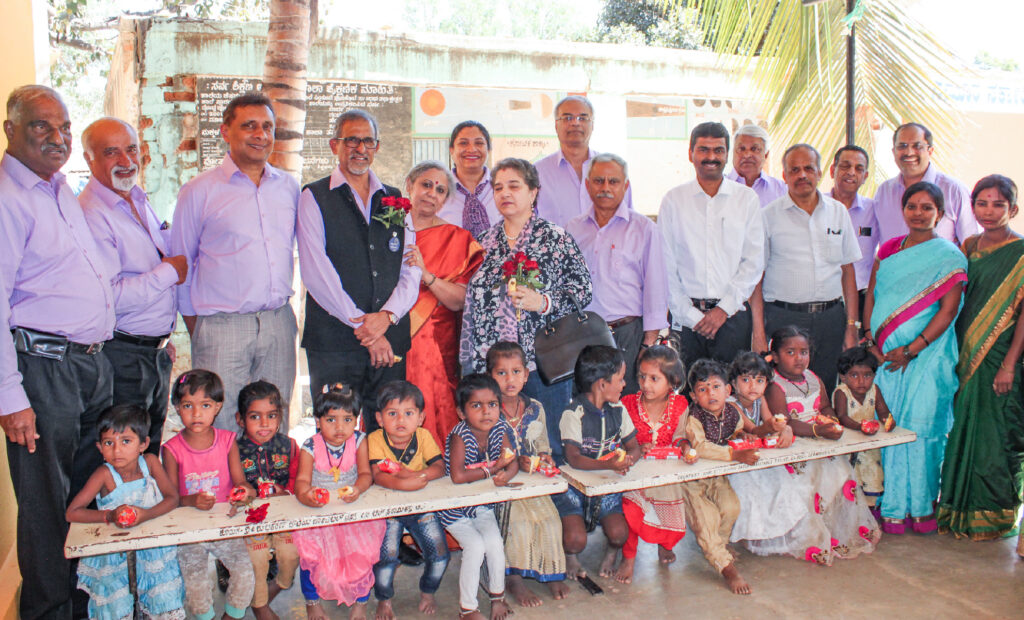
It all began in this village in 2016–17, when he was club secretary, and the club took up the task of renovating a government school under its rural development project. “As the club’s community service director, I’d visit that school that was under renovation. In one corner of that village school building, there was a dilapidated structure with a very dull and dreary interior.” He asked questions and was told that it was an anganwadi; “there was no paint on the walls, the roof was leaking, and it had a cracked cement flooring with potholes,” he recalls.
The Rotarians found that the children in 3–6 age group spent the entire day in dull, dark and dreary conditions. The toilet in the anganwadi had no plumbing or water connection and hence was not in use. “To give these children a clean, bright and cheerful environment with a hygienic toilet, we decided to renovate it too, along with the school.”
At the inaugural event, the enthusiastic response they got from the parents of the children attending the anganwadi, as well as the other villagers, surprised them. It had created even more ripples and joy than the renovation of the school; “and it had been so much easier to do it than the school. So we said let’s do a hundred anganwadis.”
And thus began the anganwadi restoration project, which has now become a passion with this club’s Rotarians.
At this point let’s understand the concept of the anganwadi and what it means to the village where it is located. Club’s former community service director Narsimhan Kannan explains that an anganwadi is a mother and child care centre, and this concept was set up by the GoI in the 1970s under the Integrated Child Development Services (ICDS) programme “to combat child hunger and malnutrition. The anganwadis in Karnataka provide several facilities for children between the ages of 3 and 6, and also take care of pregnant women and nursing mothers.”
Rahaman adds that of the 214 anganwadis their club has renovated so far, 25 to 26 are within urban localities in Bengaluru that have slums and need these services, and 175 are in villages of the three taluks mentioned. The general rule is that there should be one anganwadi for a population of 1,500, so in bigger villages, which can have as many as 5,000 people, there can be three anganwadis.
“For example, one small town, about 40km from Bengaluru, Sulibele, has nine anganwadis, and we have renovated six of these,” says Rahaman. On an average, the Rotarians spend about ₹2 lakh to renovate each anganwadi, and “the money is mainly spent on painting the walls, giving piped water supply in the toilets, providing two water tanks, and an electric motor.”
While doing this project, the Rotarians found that in many anganwadis, the government had provided a toilet, but as it had no water in rural areas, the children would relieve themselves in the open, and the toilet would be used for dumping/storing unwanted material. Now that the toilets have been spruced up and given a water connection — some even have health faucets — the children are using them. The Rotarians have also ensured that the sink in the kitchen, where the food is prepared, also has piped water supply, which helps to keep it clean.
An anganwadi basically caters to malnourished children in the 3 to 6 years age group; they come in regularly, get some basic education such as learning the alphabets and numbers, colours, names of birds and animals, etc. These children are given a snack when they come in, such as a glass of milk with a chikki, and a midday cooked meal. Rahaman explains that the anganwadi has two workers; one is a teacher and the other is the helper, who prepares the meals. Then once in a month, younger children in the age group six months-three years come in; their height, weight and general health status are evaluated, and records kept to ensure there is no malnourishment as they grow older. Their mothers are given ration to prepare the lunch at home for these children.
Apart from this, pregnant women and nursing mothers can also come to the anganwadi and get the midday meal. “Or they can send a tiffin and a hot meal to these women,” he explains. When I express surprise at such service being given in a government-run anganwadi, Rahaman says, “I have been told that this service is available to pregnant women or lactating mothers only in Karnataka. Having been closely involved with this project, I have visited so many anganwadis in the last six years, and can tell you from personal observation that this is one scheme of the government which works like a clockwork, at least in this state; 90 per cent of the funds to run the anganwadis come from the GoI and the remaining 10 per cent from the state government. On the 1st of every month, all the provisions reach the anganwadis.”
When the Rotarians offered to invite the MLA for the inaugural of the next anganwadi they renovated, “he said, ‘no, please don’t do that. You are doing great work, so please don’t involve us politicians!’
He also swears by the quality of the food. “I have eaten several times there; the children get for lunch rice and sambar with vegetables, and the meal is delicious. One day in the week, pulao is served, and on festivals and other special days, kesari or some other sweet dish is served. The anganwadis work from Monday through Saturday.”
A core team from the club is involved in the anganwadi restoration project; “six of us are regularly engaged,” says the past president who has been chair of the club’s mother and child committee which oversees this project.
This committee is also responsible for raising funds for the project and has struck gold… literally… with corporates. While the club members themselves have been generous, with at least 20 members contributing wholly for the restoration of one or two anganwadi — which means ₹2–4 lakh — one member in particular, the CEO and promoter of the listed company Suprajit Industries, Ajith Rai, a past president of the club, has already given money, through his foundation — the Suprajit Foundation — for the restoration of 69 anganwadis. And funds for 20 more from his company’s CSR funds are forthcoming through a global grant. “So you can say over 50 per cent of the ₹4 crore we’ve spent on this project alone has come from our club members,” he adds.
“We’ve also got a lot of support from Canfin Homes, which till now has sponsored the renovation of 31 anganwadis (₹62 lakh). IT corporate Citrix R&D India has also given around ₹60 lakh for 31 anganwadis.”
On the future of this project, club leaders are certain that it will continue. Club president N Balakrishnan has already shown both interest and commitment; and shortly the next few presidents in the pipeline will meet and decide whether they will continue with this project. “We are optimistic they will; and once they are on board, we will increase our target to the magical number of 500 anganwadis by 2027–28,” beams Rahaman.
The MLA who advised Rotarians to keep politicians out!
Fazal ur Rahaman has an interesting anecdote to share. When the Rotarians started working on this project in 2018–19, and had renovated about 10 anganwadis in Hoskote taluk, this work created a lot of buzz in the whole taluk. “So when we visited these anganwadis, several anganwadi workers from surrounding areas would be waiting and ask us: ‘When will you please do such renovation in our village too’.” Soon this information reached the MLA, and one morning we got a call from the department of women and child welfare, saying the MLA had asked them to stop work, and questioned the department for allowing this work without telling him. “He wanted to meet us so an appointment was fixed. I was the secretary in 2018–19, and the club president was M Jagadeesh. We met the MLA, taking with us all background details about Rotary and photos of what we had done in the anganwadis. Within two minutes his whole demeanour changed and he said: Please go ahead, all the government agencies concerned will support you.”
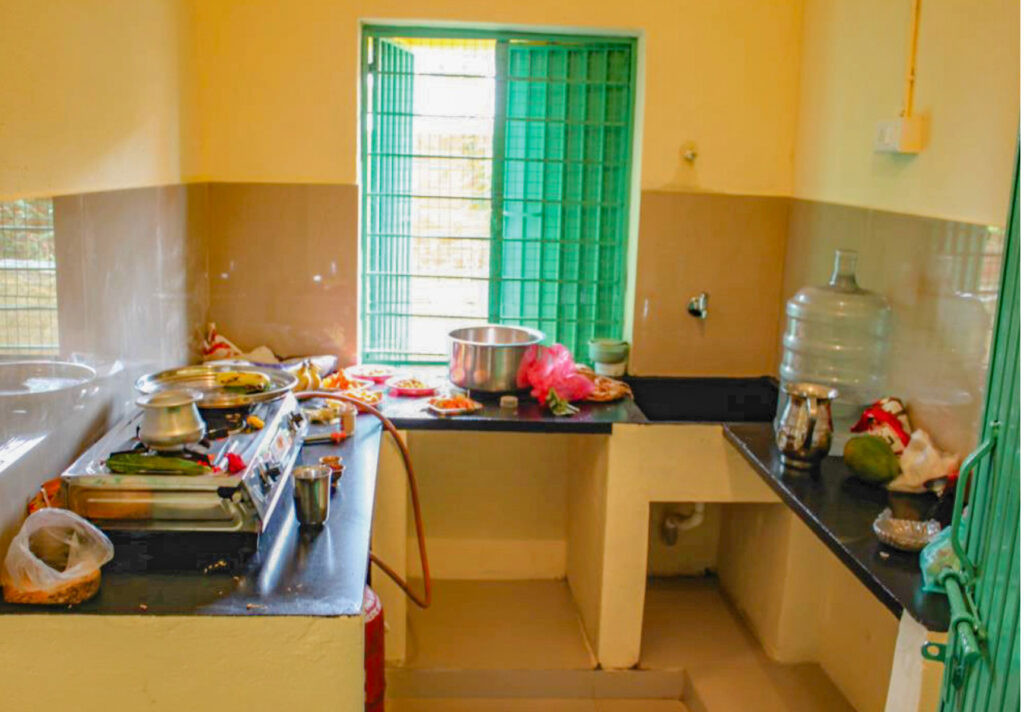
An interesting end to this story was that when the Rotarians offered to invite the MLA for the inaugural of the next anganwadi they renovated, “he said, ‘no, please don’t do that. You are doing great work, so please don’t involve us politicians!’ After that, we had no problem and got full support from the government machinery.”
The actual renovation work
During renovation, the anganwadi gets a spanking new floor, with good quality vitrified tiles. The kitchen gets a working platform and washing sink, shelves are put up in the storeroom for storing provisions; a ground-level water tank and an overhead water tank with a water pump are provided; the toilet is redone with ceramic floor tiles and glazed wall tiles; required plumbing is provided in the kitchen and toilet to ensure running water. Waterproofing of the roof is done, a steel mesh is fixed on the windows to keep the monkeys out; electrical wiring is redone and light points in rooms and power socket in the kitchen are provided. External and internal painting of the walls, doors and windows is done.

